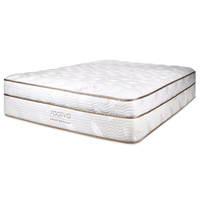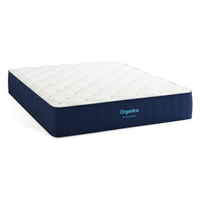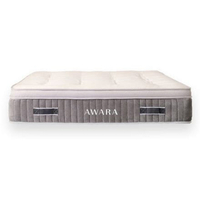What is mattress off-gassing and is it dangerous to your health?
Off-gassing causes that new mattress smell — here’s why
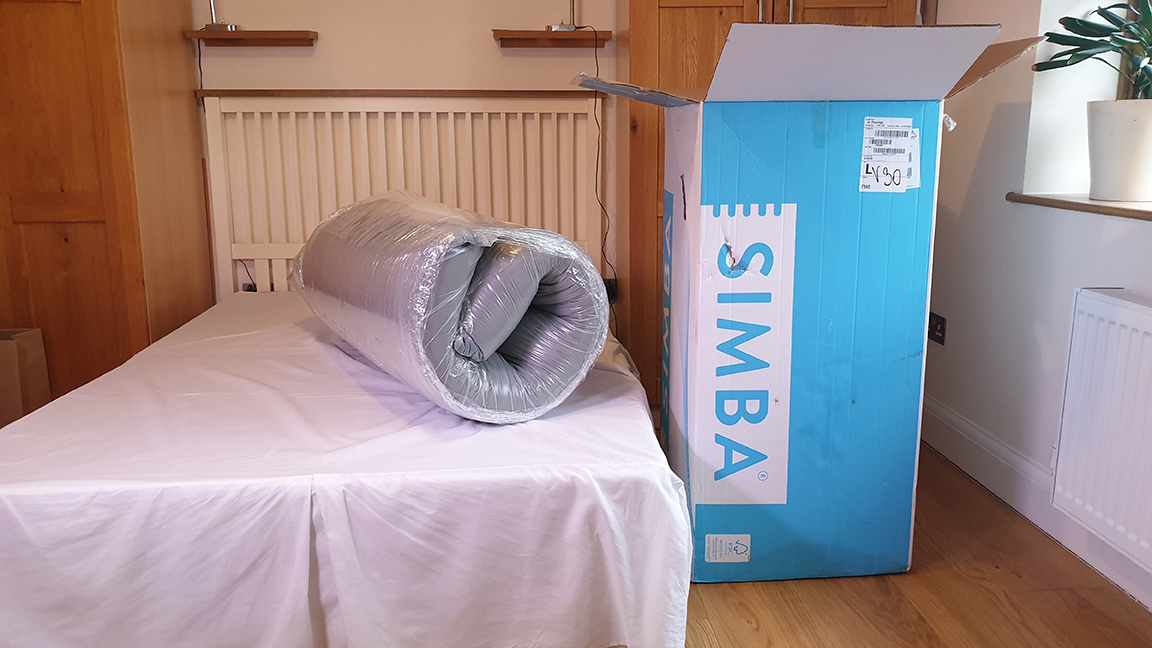
Mattress off-gassing refers to a specific process that happens when a bed-in-a-box is unpacked. That tell-tale new mattress smell can take you by surprise if you aren’t prepared for it, and if you're particularly sensitive to mattress off-gassing, you may find the pong be overpowering – annoying if you've invested in the best mattress for you, and are looking forward to a dreamy night's sleep.
It's difficult to predict how much of an odor there will be, as experiences can vary from person to person, even within the same mattress model. However, generally off-gassing is associated with foams, so you're more likely to experience smells if you opt for one of today's best memory foam mattresses, rather than an innerspring model.
Read on for a closer look at this phenomenon, including whether mattress off-gassing is dangerous to your health, why it happens, and how you can speed up the process and get rid of that new-bed smell more quickly.
What is mattress off-gassing?
Many new mattresses sometimes emit an odor when they’re first unwrapped and this is a result of by-products of mattress manufacturing known as VOCs (volatile organic compounds). This is known as off-gassing.
Mattress off-gassing occurs when you remove a mattress from its packaging for the first time, and it’s particularly noticeable with beds-in-a-box. These mattresses are compressed with a heavy weight, then vacuum sealed for packing into a box, all of which traps the chemical by-products.

What does VOC mean? Volatile means a substance that can easily become a gas, and organic means that substance is carbon-based. VOCs come in lots of forms, such as benzene, acetone, formaldehyde and ethanol. Why are they present in mattresses? Because most of them are indispensable to the manufacturing process.
Is mattress off-gassing dangerous?
Research conducted by the Icahn School of Medicine at Mount Sinai in New York City and the Israel Institute of Technology shows that estimated exposure to VOCs from mattress off-gassing remains well below the ‘No Significant Risk Levels (NSRL)’ set under California environmental laws.
Get daily insight, inspiration and deals in your inbox
Sign up for breaking news, reviews, opinion, top tech deals, and more.
However, Dr Kenneth Spaeth, chief of occupational and environmental medicine at Northwell Health in Great Neck, NY, points out that there are more concerns with children’s exposure to VOCs.
The most common side effects of off-gassing are headaches and minor allergic reactions such as eczema
“By virtue of their age and size, they have heightened vulnerability to potential toxic effects,” he points out. However, “Getting fresh air in can really help reduce those exposures.”
The most common side effects of off-gassing are headaches and minor allergic reactions such as eczema and hay fever-like symptoms. However, you can greatly reduce any risks by buying a mattress from a reputable brand that ensures the use of safe materials, such as CertiPUR-US foam.
Premium and cheap mattresses alike are prone to off-gassing, as are mattress toppers made from memory foam or a mix of foams.
Off-gassing by type of mattress
Memory Foam mattress off-gassing
Originally developed by NASA, memory foam is a viscoelastic foam that molds to the body, responding to weight, body shape and heat. It’s well-known for its excellent pressure relieving qualities, with the foam contouring around the body and cushioning it through the night.
Memory foam mattresses have a polyfoam support core, combined with comfort materials such as memory foam, polyfoam or a combination of foams. Because all-foam beds use a combination of synthetic foam, they have the highest potential for off-gassing.
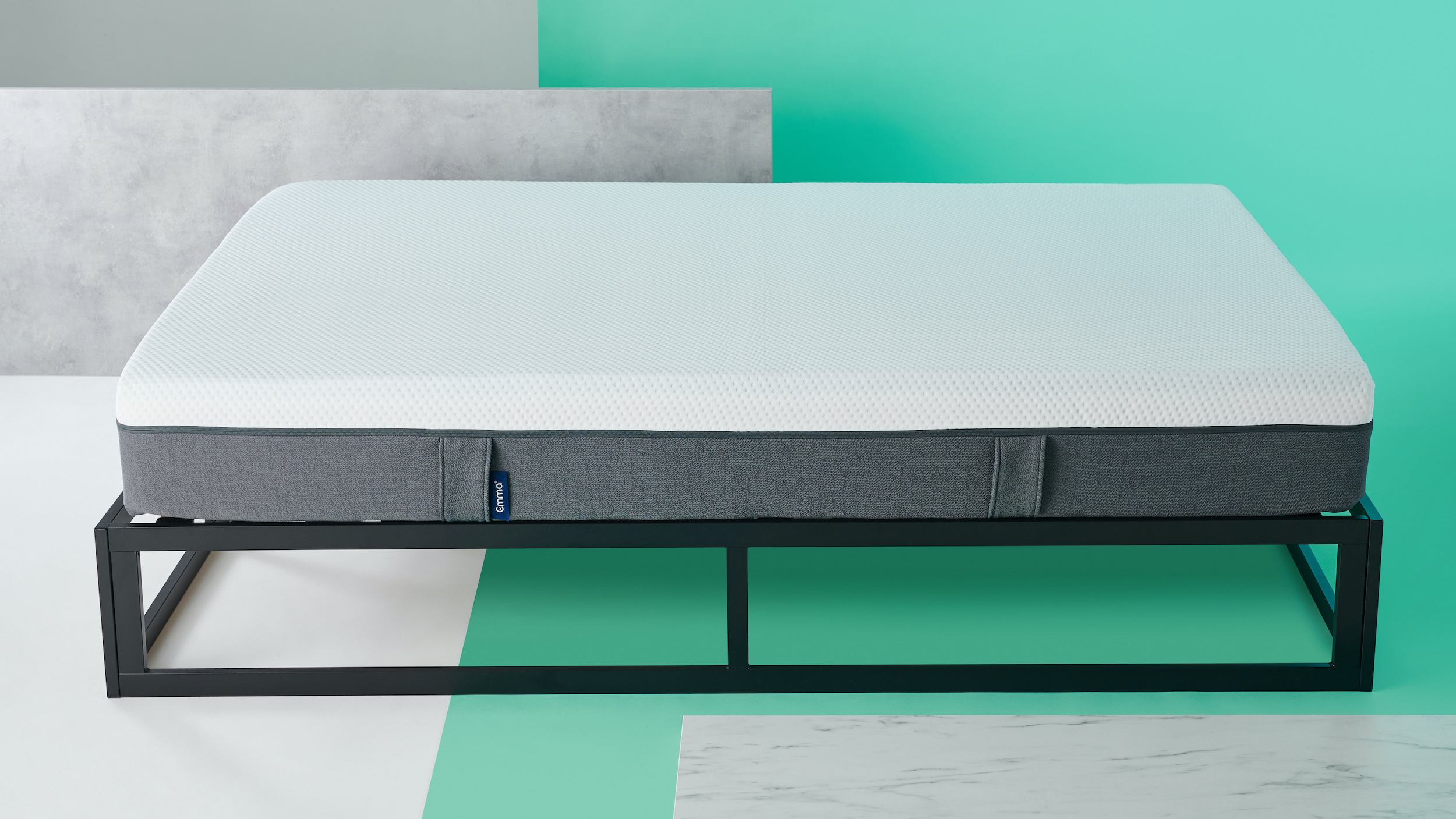
As a synthetic material, memory foam tends to emit the most noticeable off-gassing odors. If you’re set on memory foam, look for beds with certifications from GREENGUARD Gold, OEKO-TEX, CertiPUR-US, or eco-INSTITUT as these are tested for emission standards, which should reduce the potential for severe off-gassing.
Latex mattress off-gassing
Latex mattresses use support cores and comfort materials made of latex. If it’s natural latex, you shouldn’t have any off-gassing. Synthetic latex is likely to emit off-gassing odors.
Natural latex is made from the sap of rubber trees, while synthetic latex uses petrochemicals. Latex is produced by either the Dunlop or Talalay process, which gives the mattress a different feel and performance. Latex is extremely responsive and bouncy, but also provides moderate contouring and pressure relief.
Off-gassing is a telling difference between natural latex and memory foam mattresses. Natural latex has no synthetic components, meaning you won’t get any off-gassing. However, synthetic, or blended latex can emit almost as much off-gassing as memory foam.
Hybrid mattress off-gassing
These have a support core made from metal springs and comfort materials such as memory foam, latex, microcoils, polyfoam and other materials. Off-gassing depends on the materials and construction.
Layers of memory foam and polyfoam will emit more off-gassing odors, whereas natural latex won’t have any scent. There will be less off-gassing with an all-foam mattress due to the enhanced airflow and the lower use of synthetic materials.
Polyfoam mattress off-gassing
Polyfoam is a catch-all word to refer to any formulation of polyurethane-based foam. It’s frequently used as a support in mattresses.
This very much depends on the polyfoam’s specific formulation but, in general, it falls in between memory foam and latex in terms of contouring and responsiveness. As polyfoam is a synthetic material, there’s a high likelihood of off-gassing.
Microcoils and mattress off-gassing
Microcoils are a thin layer of small springs of a few inches thick, in contrast to the more substantial coil layers found in support cores. Microcoils are designed to add responsiveness, whilst keeping air flowing.
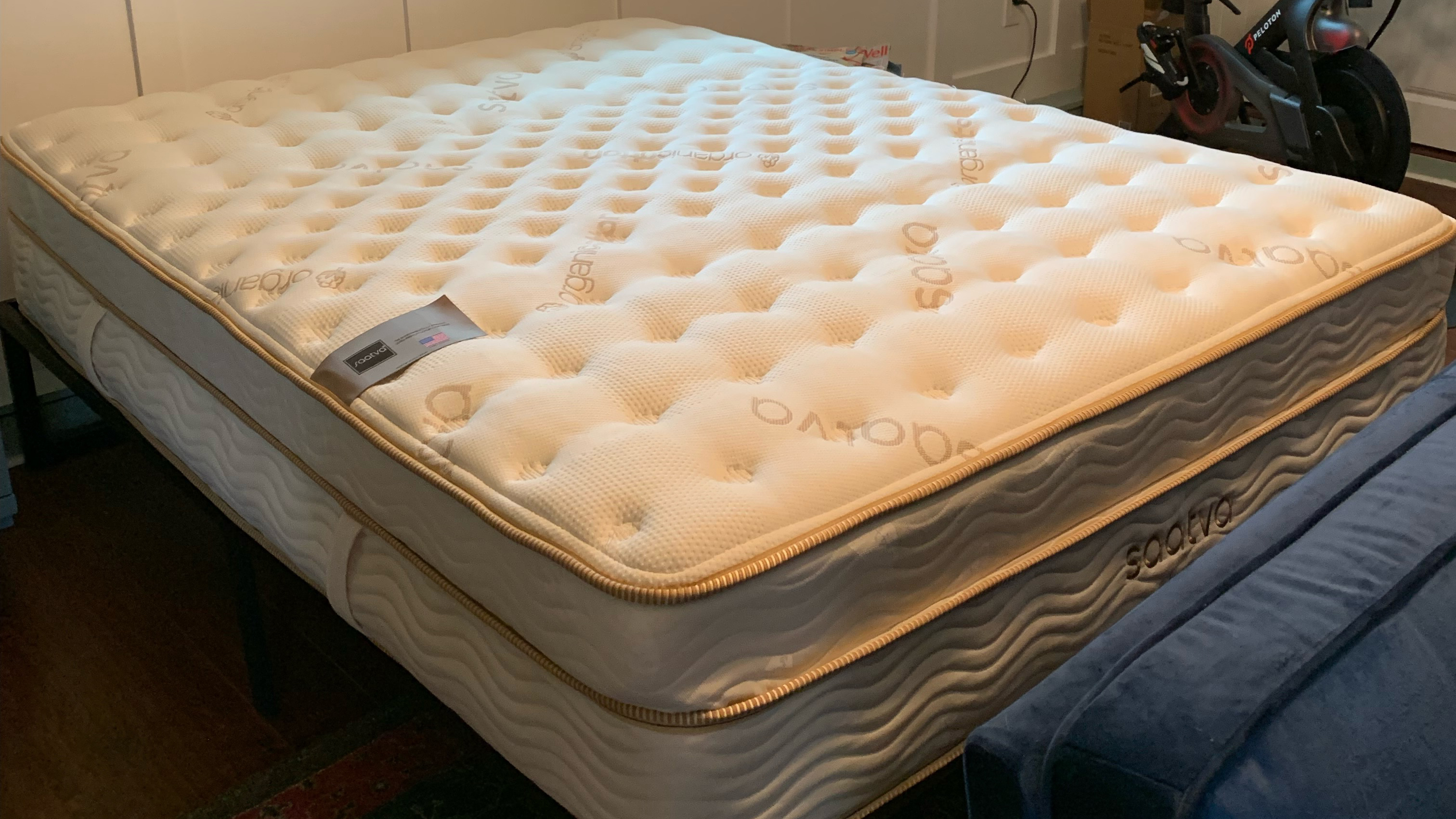
Innerspring mattresses have a bouncy core of metal springs combined with comfort padding. These mattresses aren’t prone to off-gassing because they contain very little or no synthetic foam and the coils promote better airflow to dissipate smells.
Metal coils do not emit any odors and even when wrapped individually in fabric, still produce only minimal or no off-gassing.
How long does that new mattress smell last?
Although there’s no hard and fast rule to this, you can take an educated guess according to the mattress’ composition. Foams will have more of a smell than other materials and memory foam mattresses will take longer for the odors to dissipate than hybrid mattresses. Some new beds lose their smell in a matter of hours, while others take a few days.
How to speed up mattress off-gassing
Open all of the windows in the room where you’re setting up your new mattress and make sure the room is dry with no damp. Remove all the plastic packaging from your new bed immediately and unroll the mattress fully so that it’s no longer compressed. Take all packaging outside.
You could also consider using fans to help circulate the air. If the off-gassing is particularly bad, try airing the mattress outside on a dry day for a few hours to help the smell dissipate quicker.
The 3 best mattresses for little to no off-gassing
Saatva Classic mattress: from $912 at Saatva
The luxury innerspring hybrid Saatva Classic mattress comes in a range of firmness levels from plush to firm, and you can choose from two different heights. Because it’s an innerspring mattress made from a combination of premium coils and foam, and it’s shipped flat (never compressed and rolled) there’s little to no off-gassing here. Read more in our Saatva Classic review.
Amerisleep Organica: from $1,049 at Amerisleep
Made from a combination of natural latex, Joma wool, natural wool, natural cotton and steel coils, the Amerisleep Organica has no synthetic materials, so there will be very little off-gassing here. It’s particularly well-suited to side sleepers who should appreciate its buoyancy and responsiveness.
Awara Natural Luxury Hybrid: from $799 at Awara Sleep
This all-rounder suits most sleeping positions and is particularly good at keeping hot sleepers cool at night. There’s good support at the hips and shoulders, making it an excellent choice for people with back pain. Again, as the Awara Mattress is made from natural latex, natural wool, cotton and steel coils, the lack of synthetic materials means little to no off-gassing. Read more in our Awara mattress review.
Mattress off-gassing: summary
Mattress off-gassing isn’t dangerous to your health, but it could trigger your allergies or give you a headache depending on the severity of the off-gassing smell.
To speed up mattress off-gassing, always open your bedroom windows before unboxing the bed. Take all packaging outside as soon as possible, and unfurl the mattress so that it’s no longer tightly compressed.
The longer you leave a boxed mattress sitting compressed inside a cardboard box, the stronger its off-gassing odor will be.
Read more:
Jo Plumridge is a freelance writer and photographer with over 20 years of experience writing for a variety of magazines, books and websites. She writes, perhaps unsurprisingly, about photography but also extensively on all things sleep and interior design related, alongside home and tech product reviews. She’s lived in the middle of a nature reserve in Botswana and written a guidebook to New Zealand, but now spends a lot of time trying to photograph the cats she and her husband foster for a local charity - without a doubt the most challenging subjects on earth!
